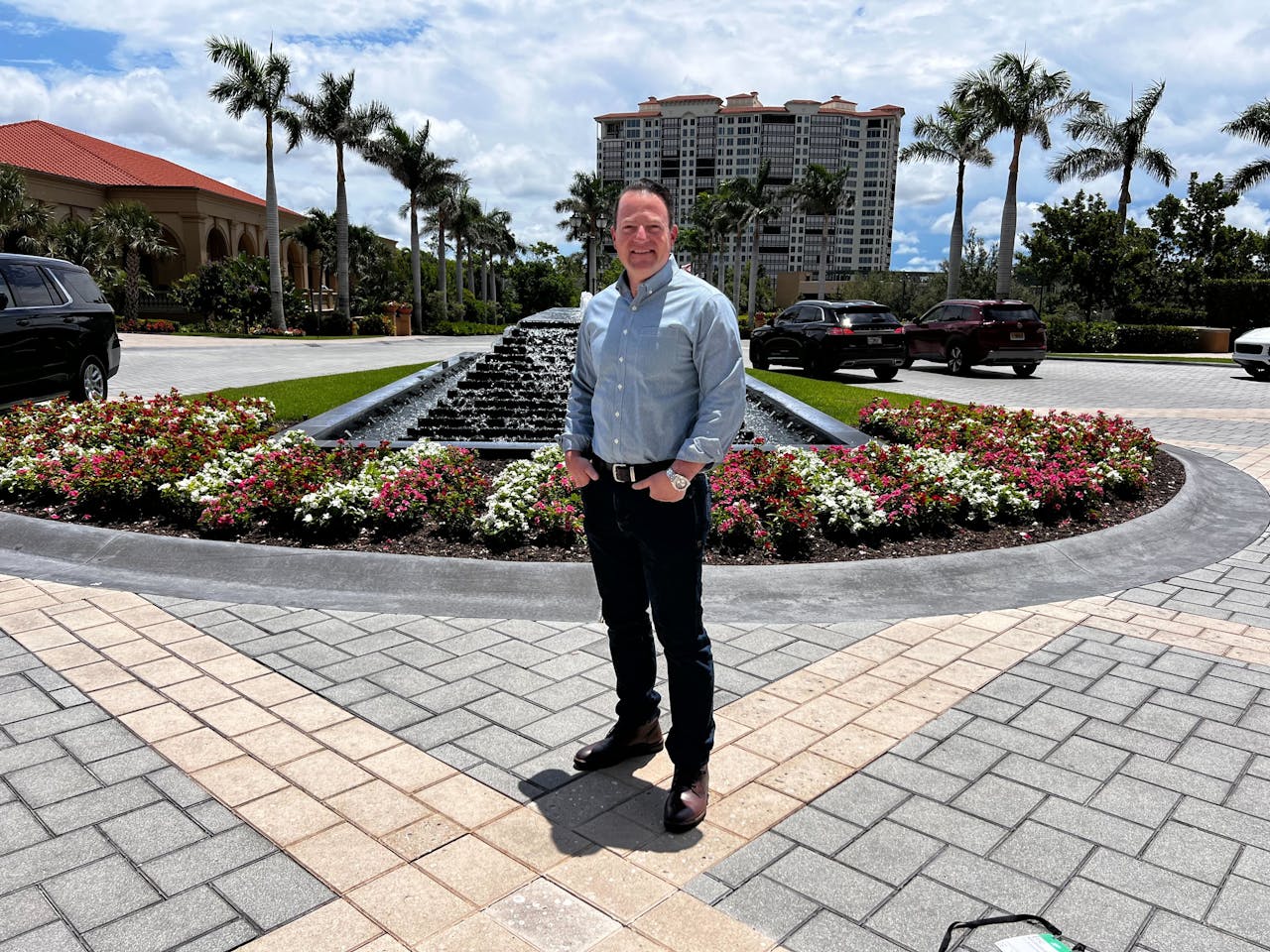
We catch up with the apparel company’s brand boss, Eric Katzenberg, to hear how it is expanding into lifestyle without abandoning its military, law enforcement and public safety personnel audience.
When Eric Katzenberg says he knows the 5.11 brand inside out, he’s not kidding. As head of brand and storytelling at the tactical apparel company, he has not only led its marketing strategy, he also volunteers as a reserve deputy sheriff in Orange County. In other words, he doesn’t just wear the gear, he works in it.
We caught up with him at the ANA Masters of B2B Marketing Conference, where 5.11 was making a rare but strategic play: taking a brand forged in the fires of B2B to the broader consumer market. “This isn’t a revolution,” says Katzenberg. “It’s an evolution. We’re not changing who we are – we’re just bringing what we do to more people.”
Want to go deeper? Ask The Drum
A brand born on the rockface
5.11’s story begins, improbably, on a cliff. The brand was originally founded by legendary Yosemite climber Royal Robbins, who needed tougher trousers than denim could offer. “Royal was climbing in blue jeans,” says Katzenberg. “So he created a super-durable, functional pair of pants that could handle the impossible – a 5.11-level climb.”
(In case you’re not fluent in climbing lingo, 5.11 is a near-impossible grade, “but every now and then somebody actually does it,” adds Katzenberg.)
Those same pants were eventually adopted by the FBI’s training academy and word spread fast. From there, the brand pivoted to supplying gear for law enforcement, military and emergency services – building a business that now spans hundreds of SKUs, with agencies across the globe kitted out in 5.11.
If you looked closely at the socks of the Secret Service agents, for example, in the iconic picture of Trump in the aftermath of being shot, they were 5:11s. But they work equally well in less dramatic situations, like an interview with The Drum. Katzenberg was wearing a pair as he spoke to us, as well as 5:11 jeans and a shirt.
‘I probably sold 150 pairs just from wearing them’
Ask Katzenberg what makes 5.11 popular and he won’t point to ad campaigns, he’ll point to the gear. “If you’re thinking about your boots, that’s a problem. You need to be thinking about the situation in front of you, not your feet.”
The brand’s proprietary Flex-Tac fabric – a mechanically coiled fibre with stretch but no sag – is a case in point. It’s now standard issue for Las Vegas Metro PD, which recently swapped out its 80-year-old black wool uniforms for a 5.11 refresh. “Imagine wearing black wool in 110-degree Vegas heat,” Katzenberg laughs. “Our gear looks sharp, but it moves with you. It doesn’t fade, doesn’t rip and just works.”
Katzenberg should know – he wears it on duty himself. “I’ve probably sold 150 pairs of boots just by being asked, ‘What are those?’”
Advertisement
Storytelling from the frontlines
What sets 5.11 apart, though, is how it puts the wearer at the heart of its brand. “We don’t use models in our campaigns, we use real officers, wearing our gear on real assignments, during real shoots.”
That content is used not just to sell uniforms, but to empower the agencies themselves with PR material, recruiting assets and local pride.
It’s storytelling, yes – but also community-building.
5.11 goes mainstream (quietly)
While the company has always had a consumer base, especially among outdoor, adventure and fitness communities, it’s now leaning in. “We’ve had retail stores for years,” says Katzenberg. “But recently we revamped several in Southern California to focus more on adventure and everyday wear.”
The goal? To make 5.11 as synonymous with functional, durable gear as North Face or Patagonia – except this time, grounded in real-life performance. “We make cool, tough shit,” he grins. “And people are starting to notice.”
Take fitness. 5.11’s weight vest, based on a ballistic plate carrier, was originally designed for Navy Seal workouts like ‘The Murph’ and is now a staple in CrossFit competitions such as Wodapalooza. “We redesigned it for functional fitness,” he explains, “but the DNA is still the same.”
Advertisement
A uniform for everyone?
From law enforcement to Jeep safaris in Moab and off-grid expeditions via Overland Expo, 5.11 is expanding into lifestyle without losing its tactical edge. “Fitness, adventure, everyday casual – people already wear our stuff for all of it. Now we’re just speaking to them more clearly.”
That means product expansion, new branding (watch this space) and a shift in tone that balances the professional with the aspirational.
He’s clear about one thing, though: “We’re not leaving the people who brought us to the party behind. Our B2B customers – the people in uniform – will always come first. But we believe everyone, one day, might want to wear 5.11.”
Boots-on-ground, eyes-on brand
Katzenberg’s weekend shifts as a deputy sheriff aren’t just PR-friendly anecdotes. They’re part of a bigger mission to keep the brand authentic. “If I don’t understand how our product works in the field, how can I tell those stories?”
One of his proudest moments was a short documentary on the 20th anniversary of 9/11 featuring first-hand accounts from responders at Ground Zero. “It became a piece of living history,” he says quietly. “That’s the kind of brand we want to be.”
In an industry full of jargon, Katzenberg cuts to the chase: “If you ever get stuck in a ditch, you want someone wearing 5.11 coming round the corner.”
Suggested newsletters for you
Daily Briefing
Daily
Catch up on the most important stories of the day, curated by our editorial team.
Weekly Marketing
Friday
Stay up to date with a curated digest of the most important marketing stories and expert insights from our global team.
The Drum Insider
Once a month
Learn how to pitch to our editors and get published on The Drum.
